In post-colonial Singapore, how did Christianity evolve from a faith left behind by Western missionaries to one that was embraced by locals?
The answer lies in the powerful move of the Holy Spirit, which swept through the schools, churches and workplaces.
Anglo-Chinese School (ACS). Dunearn Technical Secondary. St Andrew’s. Swiss Cottage. Raffles Girls’.
These were just a few institutions where youths were stirred up to pray and started to be filled with the Holy Spirit.
“Falling in love.”
“Intense.”
“A hunger and thirst.”
It wasn’t just about speaking in tongues — those who experienced the baptism of the Holy Spirit were overcome with love and joy, and emboldened to share the gospel with their friends and family.
Word, works, wonders
Rev Dr Norman Wong, Chaplain of Methodist Welfare Services, was 16 or 17 when he saw his Pre-University classmates at ACS develop a zeal he had never witnessed before.
“That took me by surprise because I knew these people all through their secondary school days, and suddenly they became alive,” he recounted.
“So I began chatting with them, asking them, and then they explained to me about the Holy Spirit — how they could speak in tongues, and how that was such a wonderful experience.”
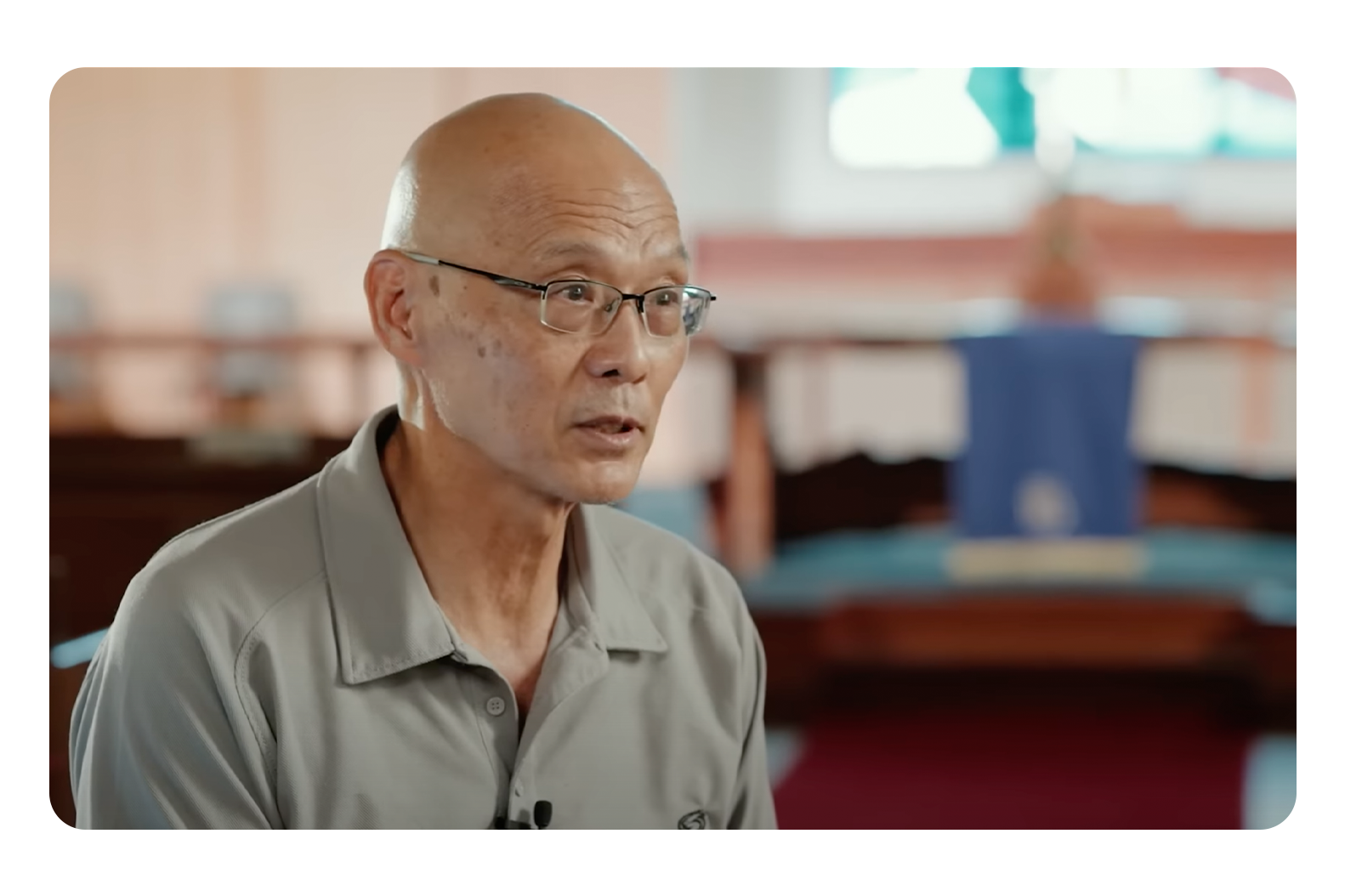
The amazing thing about peers sharing the Good News with peers?
“I think by the end of our Pre-University 2, at least 30 out of 40 of us had joined the cell group and had been baptised in the Spirit. It was really quite something,” said Rev Norman.
By the start of July 1972, many came to associate the clock tower at ACS — where students would run to and pray at different times of the day — with the beginnings of the Charismatic Movement in Singapore
Not just in ACS
Meanwhile, the work of the Holy Spirit wasn’t just confined to one school.
Also in July 1972, students at Dunearn Technical Secondary School had begun gathering behind the science laboratories to pray and fast.
World Revival Prayer Fellowship (WRPF) founding members Philip Lee and Zach Wong were among them.
In fact, as early as March, a handful of them had already become very interested in the workings of the Holy Spirit.
Other than poring over the Bible and attending weekly Youth for Christ meetings near their school, they were looking for any news that they could find.
“We were very curious, and we had a lot of discussions. So we started to visit other churches, especially the Assembly of God churches, because we heard that they also had this kind of experience,” said Lee.
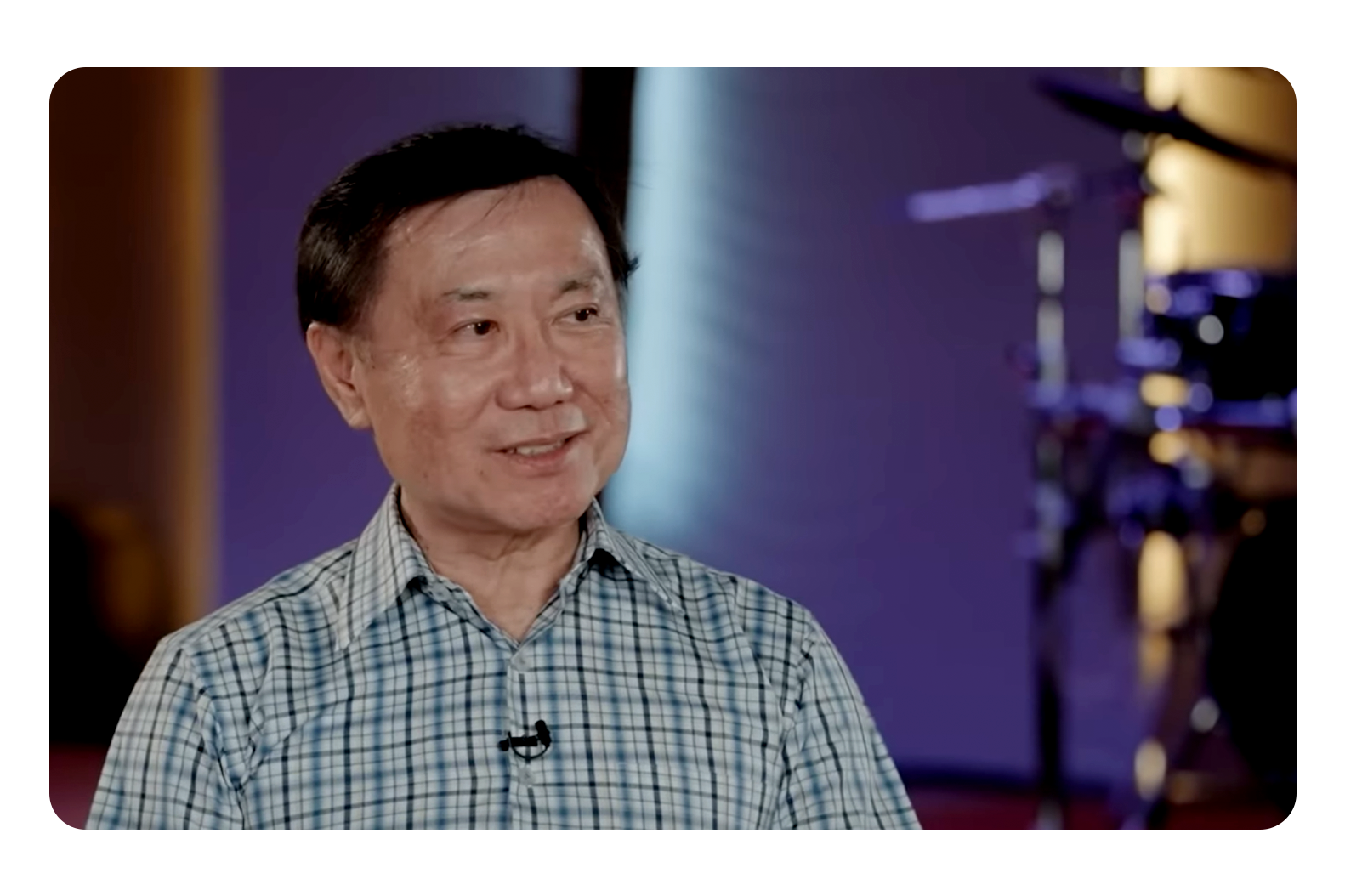
One by one as Lee and his friends had personal encounters of the in-filling of the Holy Spirit, the group was introduced to spiritual mentor A.M. Mathew, who encouraged them to get water baptised.
“Then we decided okay, let’s do it on that same day when we met him… so somehow we packed into his car and went to Kranji River,” he recalled.
“We found a place that has a small opening, through the mangrove swamps… then the tide was low.
“So he told us ‘okay, we have to wait until the tide is higher’. That’s how we waited until 8pm.”
Interestingly, it was on the 8th of August — the eighth month of the year — when eight of these students got baptised, which would later earn them the nickname “Dunearn Eight“.
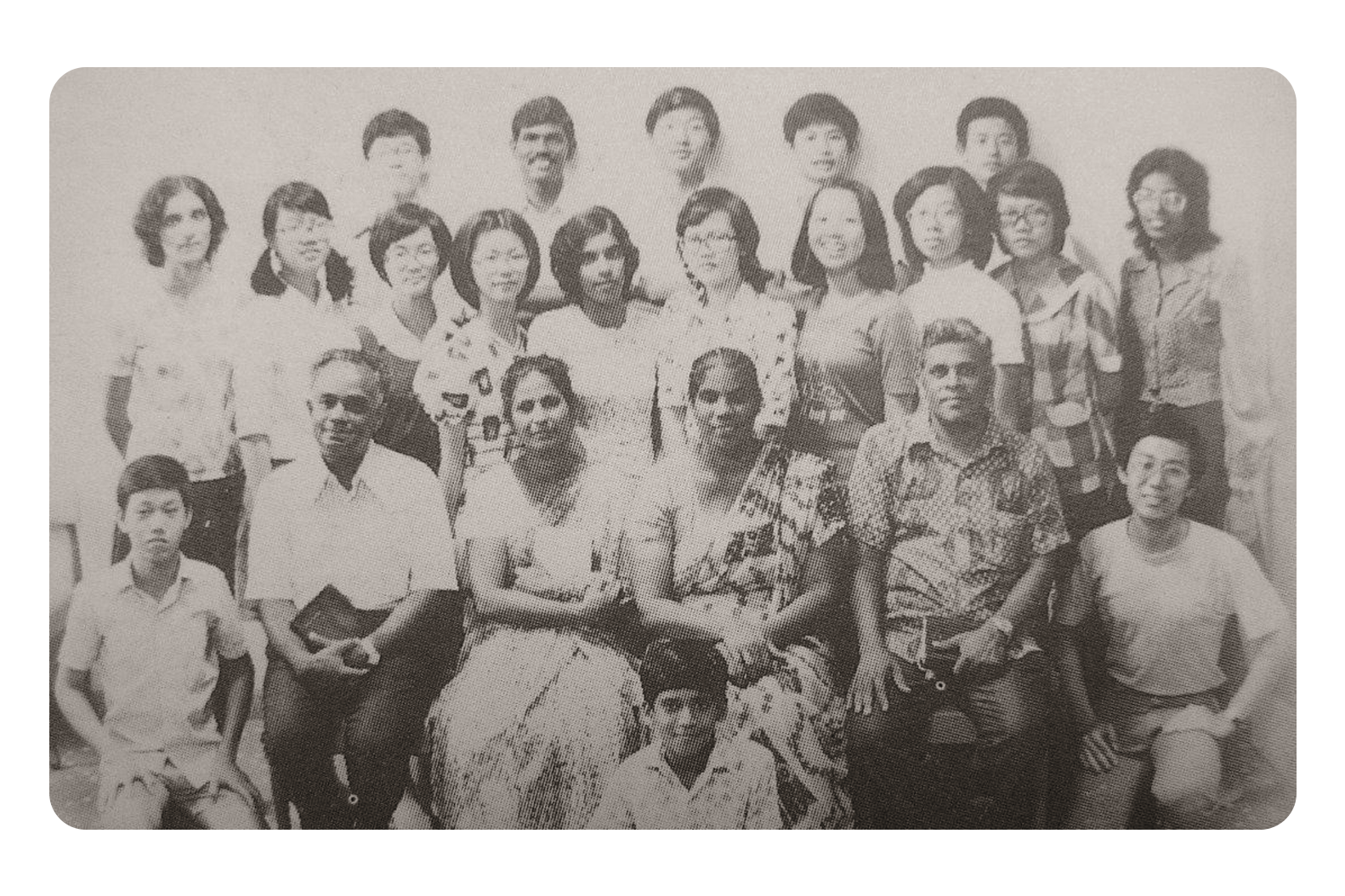
“And 1972 was also the eighth National Day of Singapore,” Wong later discovered, choking up with emotion.
“It was something that we didn’t realise, we didn’t orchestrate. It just happened. It really blew our minds.
“After we got baptised, we met at Brother Mathew’s home on Saturday afternoons… After that, word got around.”
Although he was working for oil company Castrol at that time, Brother Mathew opened his house on the weekends and taught the Bible to students who would turn up in the busloads at No. 14 Jalan Dermawan.
And just like that, the gospel spread to students from other schools.
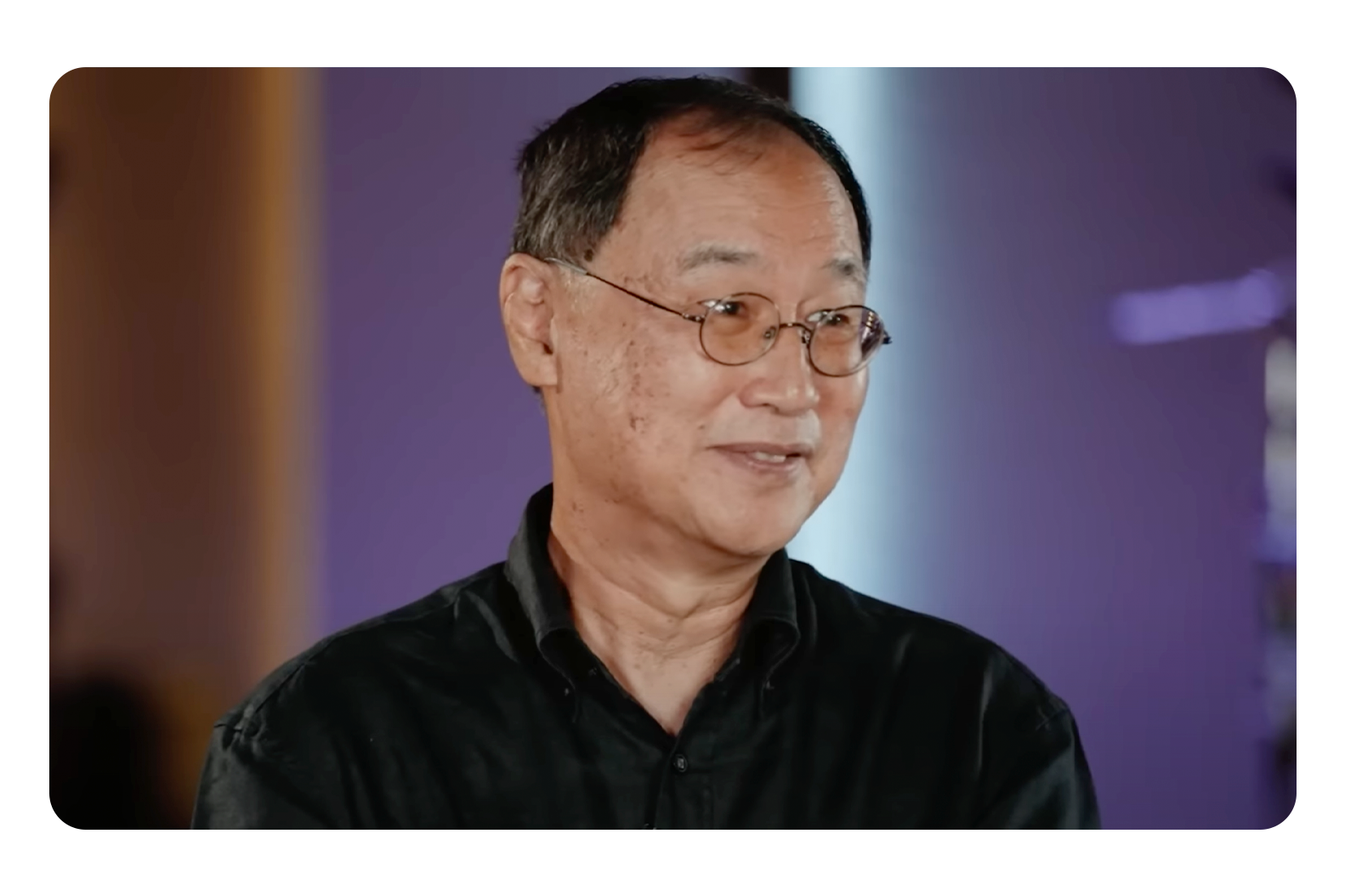
One of those who attended the house meetings was Rev Kenny Chee, former Senior Pastor of WRPF.
Describing what a typical weekend would look like, the alumnus of Swiss Cottage Secondary School said: “The move of the Spirit (was) so powerful: tears of repentance, tears of joy, speaking in other tongues.”
And out of the group that met there, a new church — WRPF — was birthed.
Spreading from the schools
“If there’s a word I would use, it would be ‘growth’,” said Rev Chee.
“The number of churches, new church plants also grew — both independent as well as Anglican church extensions.”
The rise of the mega churches was linked to the revival too, he noted.
For instance, pastors such as Yang Tuck Yoong (Cornerstone Community Church) were touched by the Spirit during this period and subsequently started their own churches.
“Because of the revival, there were many people who were called into pastoring or full-time Christian vocations, as well as mission work,” he said.
In fact, Rev Chee himself gave his life to God when the revival was in full swing.
Parachurch ministries also felt the impact.
“Operation Mobilisation, Youth With A Mission, Campus Crusade for Christ — they all expanded during that period. Fantastic growth,” he remarked.
“The timing of God is perfect because during that time, Singapore’s economy was growing rapidly,” said Rev Chee, referring to the robust GDP growth in those years.

With members sowing into the Kingdom, churches across Singapore could financially support new building projects and pioneer missions work.
He elaborated: “The number of people that went out on the mission field — some sent through mission agencies, others because their church had become stronger… this was unprecedented.”
Rev James Chan, former National Director of Youth With A Mission (YWAM) Singapore, was one of those.
The alumnus of Victoria School was in Pre-University 1 when a classmate shared the Good News with him and invited him to WRPF.
“It was there where I really heard the gospel for the first time and I got saved,” he revealed.
After answering the call to missions, Rev Chan eventually joined YWAM Singapore, where he has been serving for 30 years.
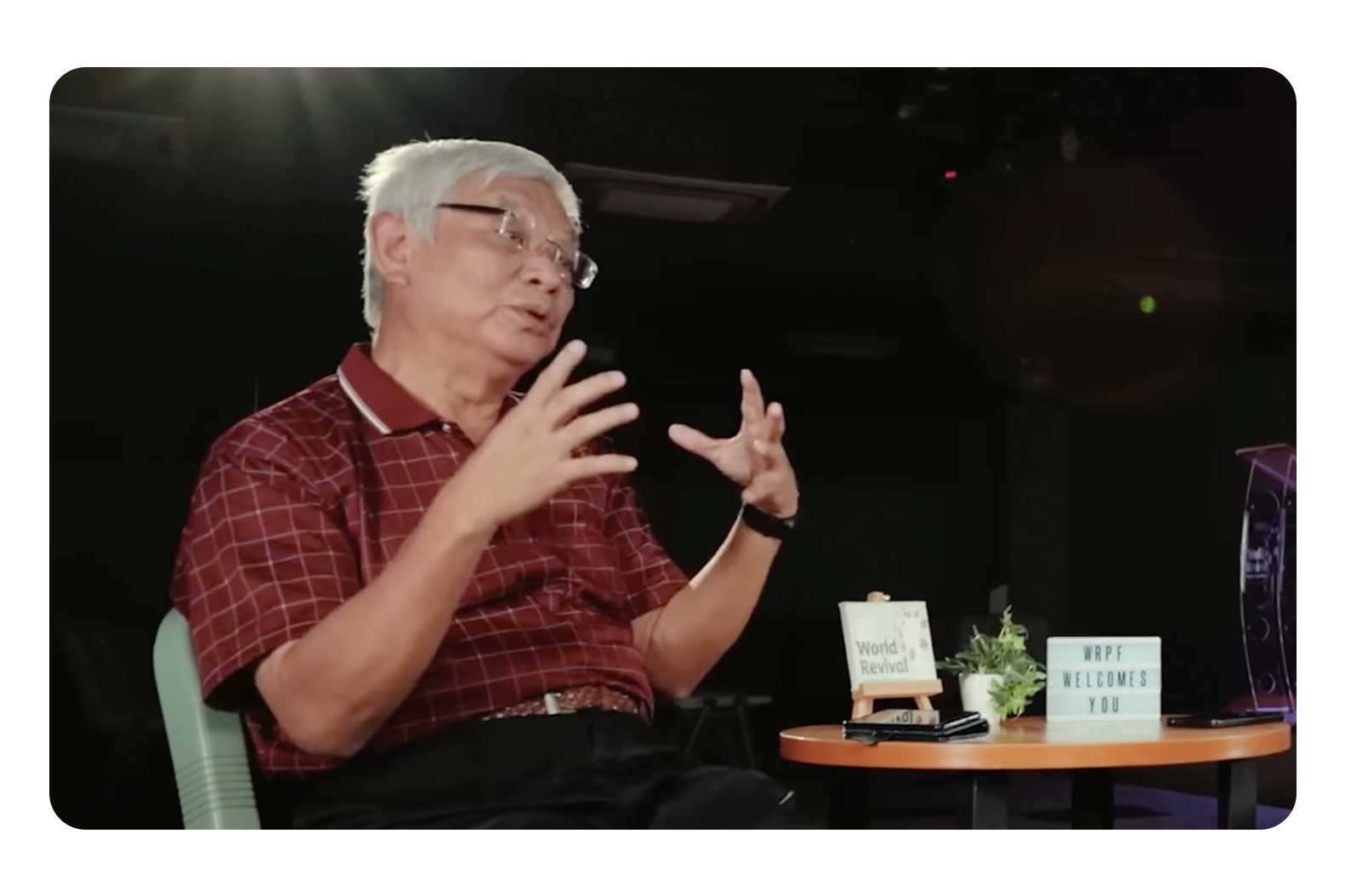
When Christians were revived, that also spurred evangelism and resulted in many coming to know Jesus over the next few decades, he observed.
In fact, the number of Christians in Singapore rose from a single-digit percentage of the population in the 1970s to 14.6% in 2000. In comparison, the 2020 figure stands at 18.9%.
Because the move of God started with the young, Rev Chan pointed out that this generation went on to graduate, join the workforce and impact society on all levels — even the government.
“It transformed our nation as a whole,” he summarised.
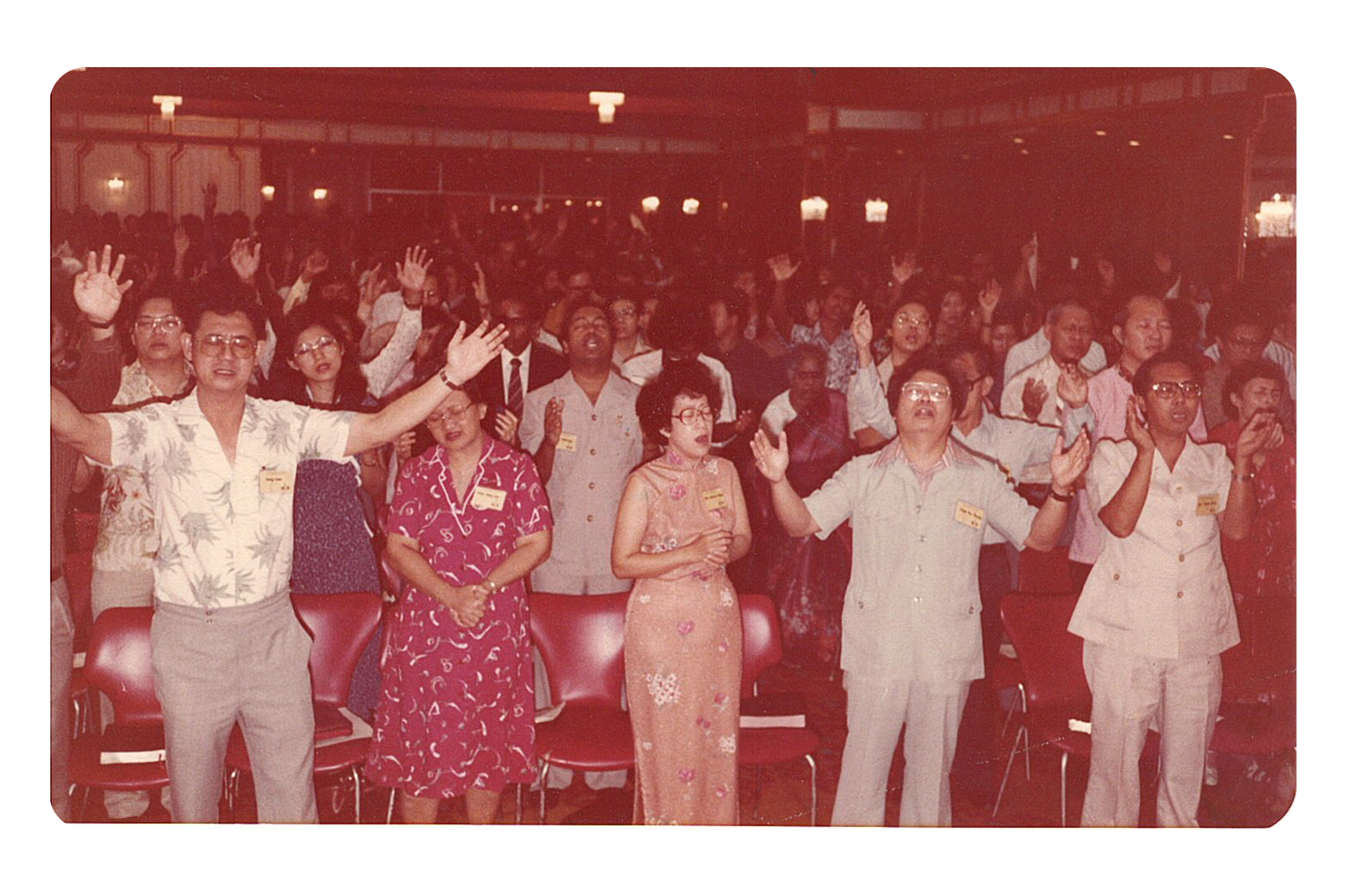
Whether in the public service or the business realm, many of the nation’s leaders who played their part in the modernisation of Singapore were inspired by the love of God, said Georgie Lee, author of Unfolding His Story: The Story of the Charismatic Movement in Singapore.
As the Church grew, it also became more conscious about how it could contribute to the community, he added.
For instance, drugs was becoming a big problem at that time, and Christians began reaching out to drug addicts.
“This is one of our major contributions if you see or look around today. The work of Christian agencies in rehabilitation is very significant,” observed Lee.
In other words, the revival among Christians had ripple effects on society.
“The laypeople played a very important part in the growth of the Church,” said Rev Chan.
How the Holy Spirit moved in the marketplace
The revival also gained momentum when the Singapore chapter of the Full Gospel Business Men’s Fellowship International (FGBMFI) was formed in 1975.
Lee, who is also President, Gatekeepers Singapore (which started as FGBMFI), said: “This fellowship became a very useful platform because it wasn’t another local church.”
The interdenominational parachurch organisation organised public meetings either over lunch or dinner, very often at the Singapore Conference Hall in Shenton Way.
“People started queuing hours before the meeting started to be able to get into the hall — such was the hunger at that point of time,” he remembered.
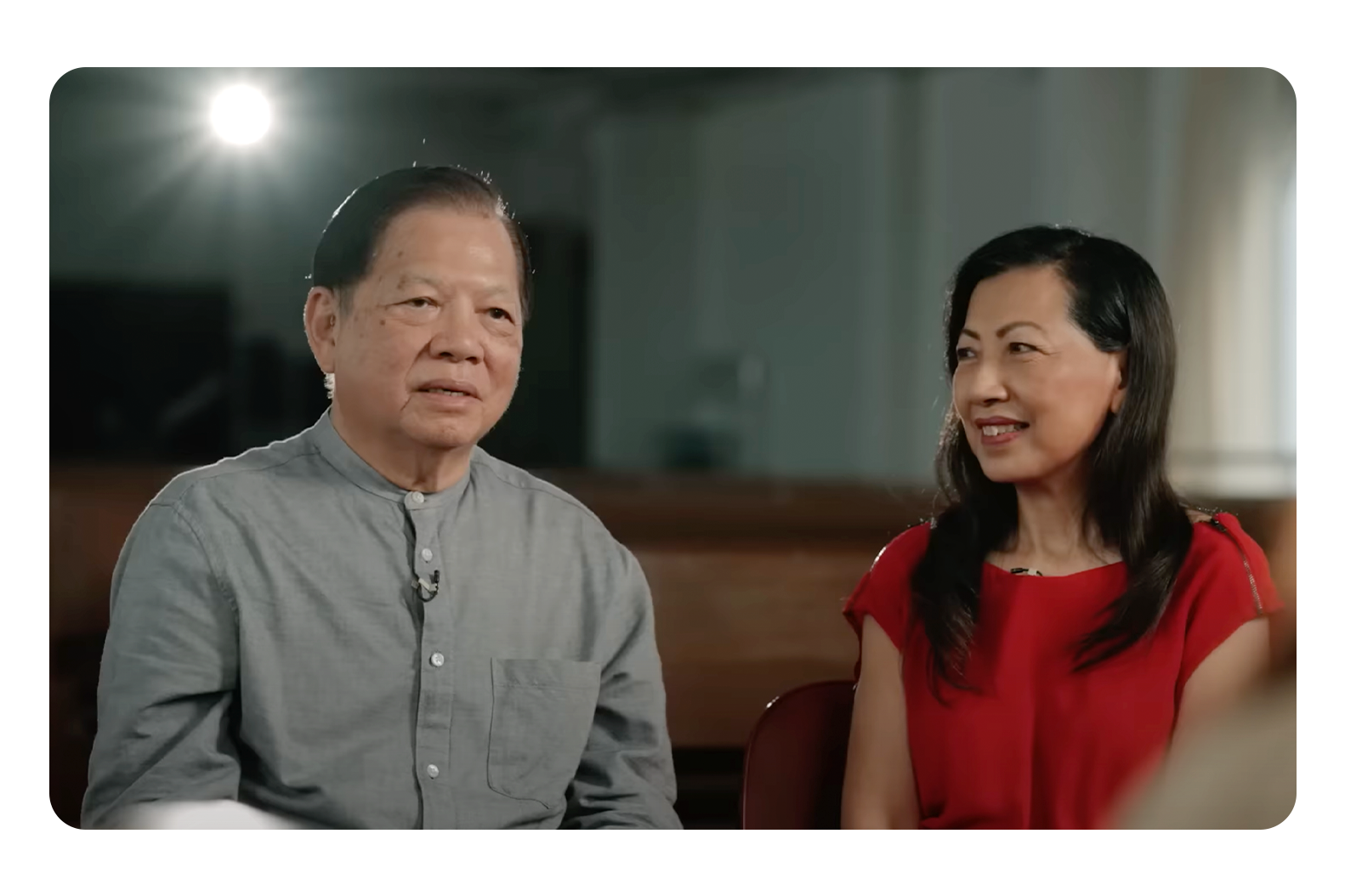
As a young adult working in the financial industry, Lee and his then-girlfriend-now-wife would attend these meetings that were being held downtown.
And like him, many Christians from traditional churches were curious as they heard that they could experience the presence of God there.
“The 1970s revival was a very momentous period in the history of Christianity in Singapore. It actually changed the face of Christianity in Singapore,” emphasised Lee.
At that time, none of the Christian groups had found a strategy of presenting the faith in a way that was relevant to the lives of locals.
He explained: “God in His mysterious way, brought this whole move of the Holy Spirit, like in the Acts of the Apostles, that cut across all barriers that people had… in a way they never seen or experienced before.
“At the meetings, you would see signs and wonders, you would see salvation. And so that helped — together with the churches — lead to an upsurge of Christianity in Singapore.”
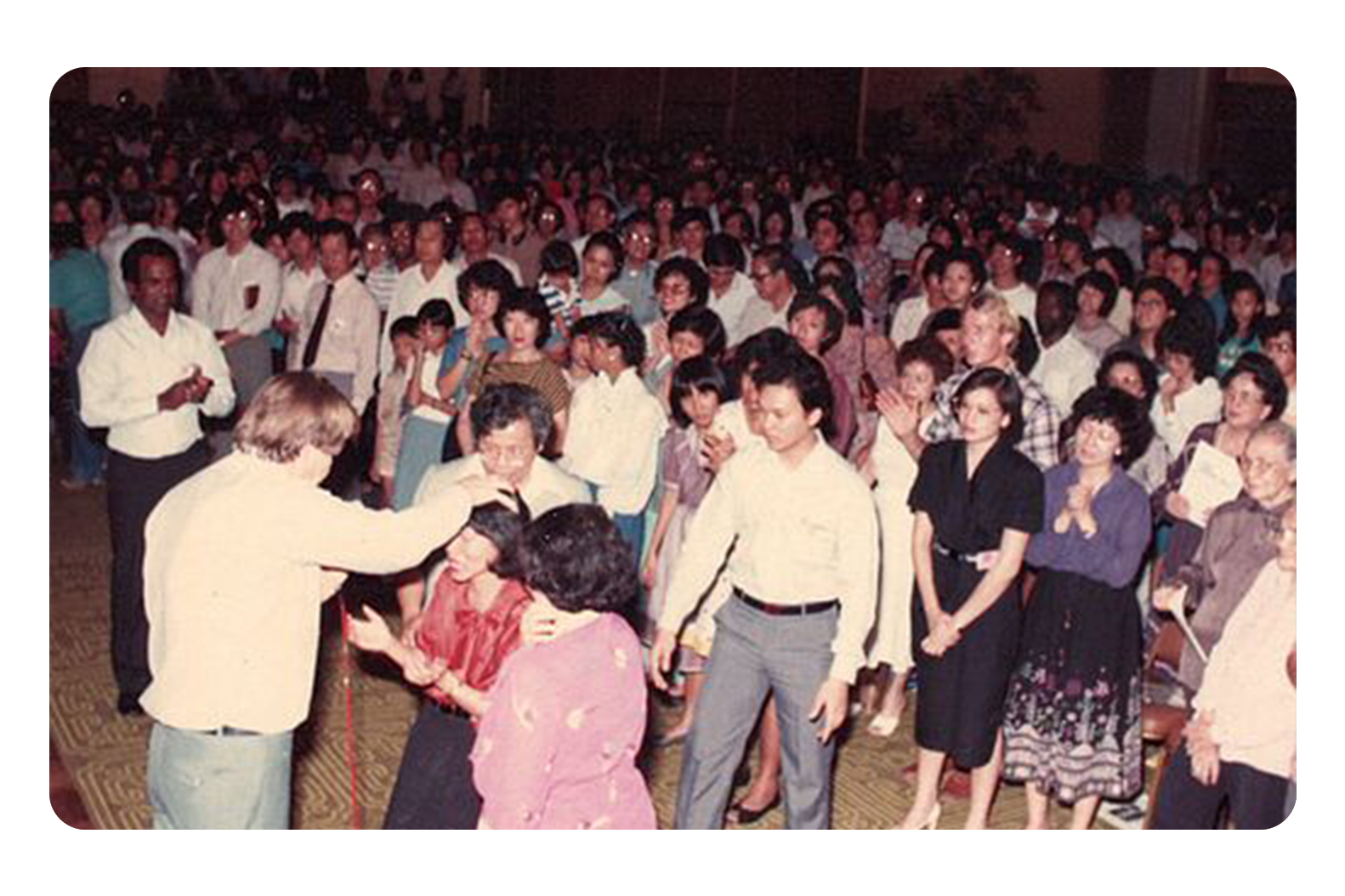
Highlighting how the baptism of the Holy Spirit was a powerful turning point for many believers back then, Lee said: “We were very fervent. We were very excited. We reached out to our friends and people we knew or even those we didn’t.
“Almost every day after work, we were somewhere sharing the Word of God, or praying for people or explaining — for non-believers, bringing them to know Jesus Christ; for believers, to experience the baptism of the Holy Spirit.
“We saw people who didn’t know Christ come to the Lord. We saw friends that were Christian but very nominal set on fire.
“We witnessed the supernatural happening.”
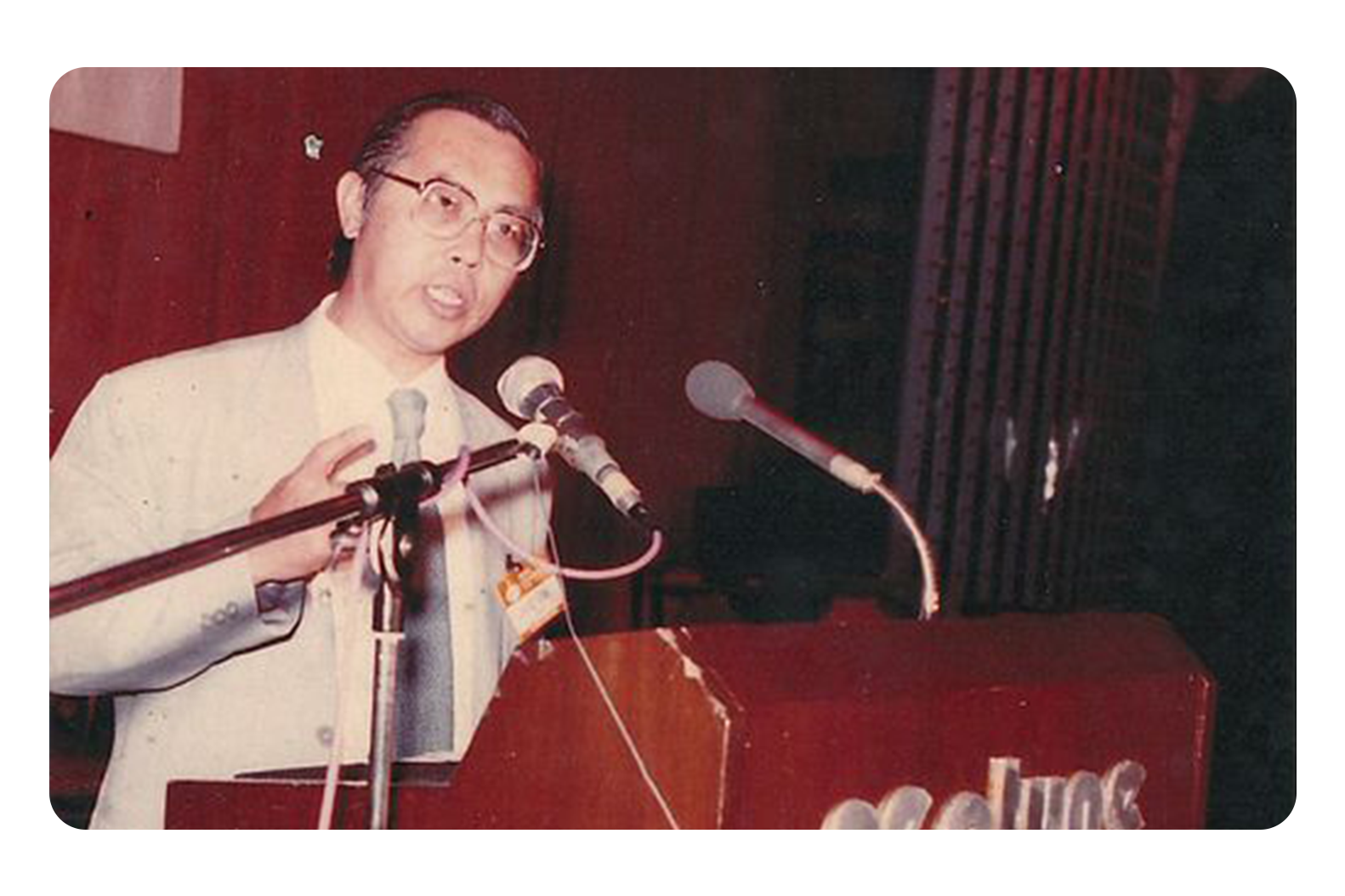
Together with Christians from different denominations, Lee formed a house group.
And like others who had seen the Holy Spirit at work and sought out mature Christians to guide them, they approached Anglican minister Canon James Wong.
“When the revival happened, people were saved. Every day, (there were) new testimonies. And they needed to be churched,” said Lee.
Then came a day in the late 1970s when they were challenged by their spiritual advisor.to plant a church in the Whampoa neighbourhood.
In 1980, Whampoa Christian Centre (later renamed Chapel of the Holy Spirit) was launched as an extension of the Chapel of the Resurrection.
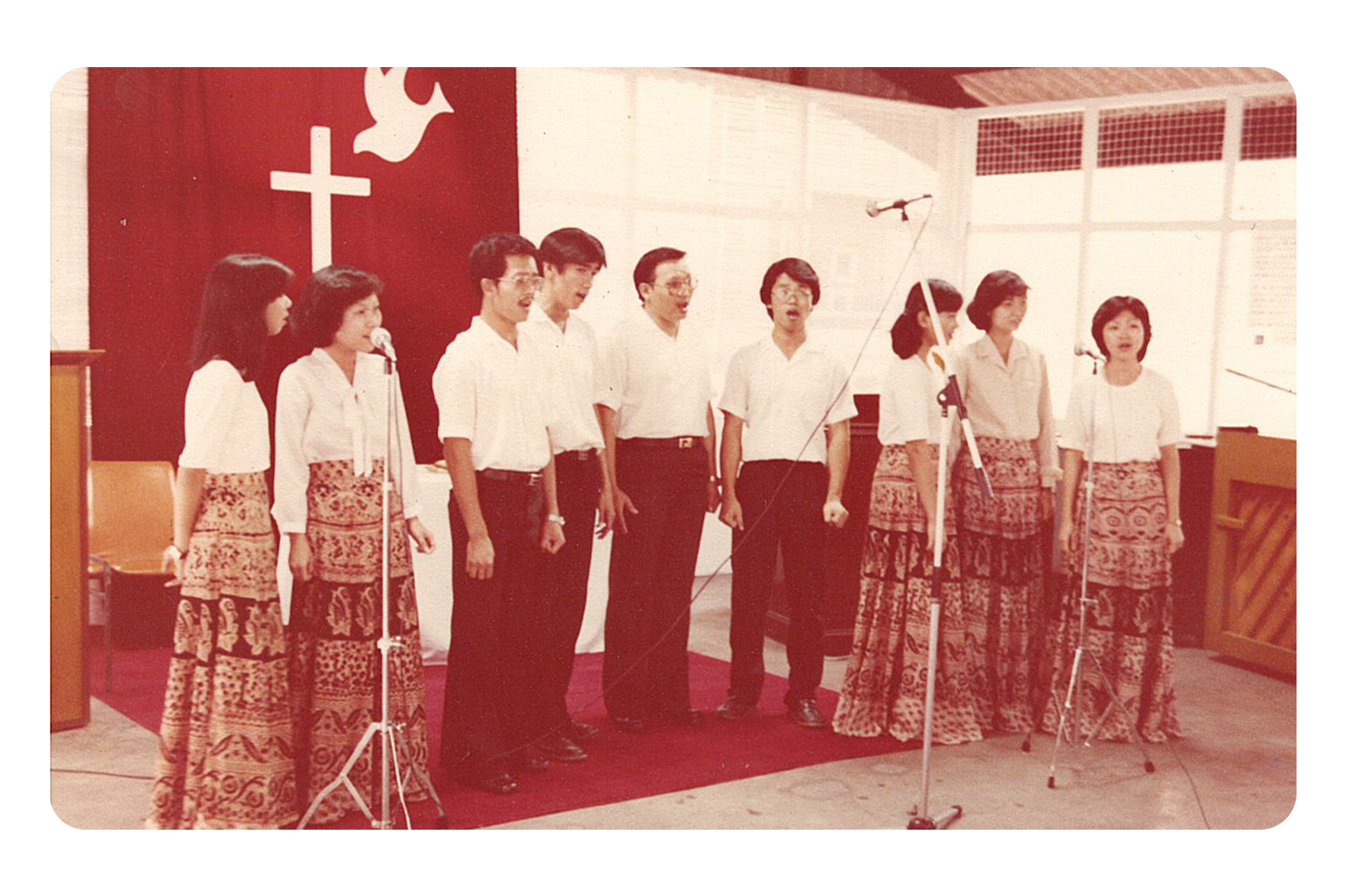
Churches coming alive
By the 1980s, it was not just the Anglican churches that were powerfully touched by the Holy Spirit.
The revival had also broken out among other denominations, such as the Methodists.
Rev Wong, who received his baptism of the Holy Spirit when he was a student at ACS, clarified how the Charismatic Renewal came into his church.
Although he was a committed Christian born and raised in Wesley Methodist Church, Rev Wong never knew he could experience emotions in his relationship with God.
He said: “We were part of the youth ministry that we call the Methodist Youth Fellowship (MYF).
“And so naturally, when we had experienced this move of the Spirit (at ACS), we shared it with our friends there.
“Same thing — we explained to them from the Scriptures. If they were interested, we would pray for them, and a number of them received the gift of speaking in tongues.”
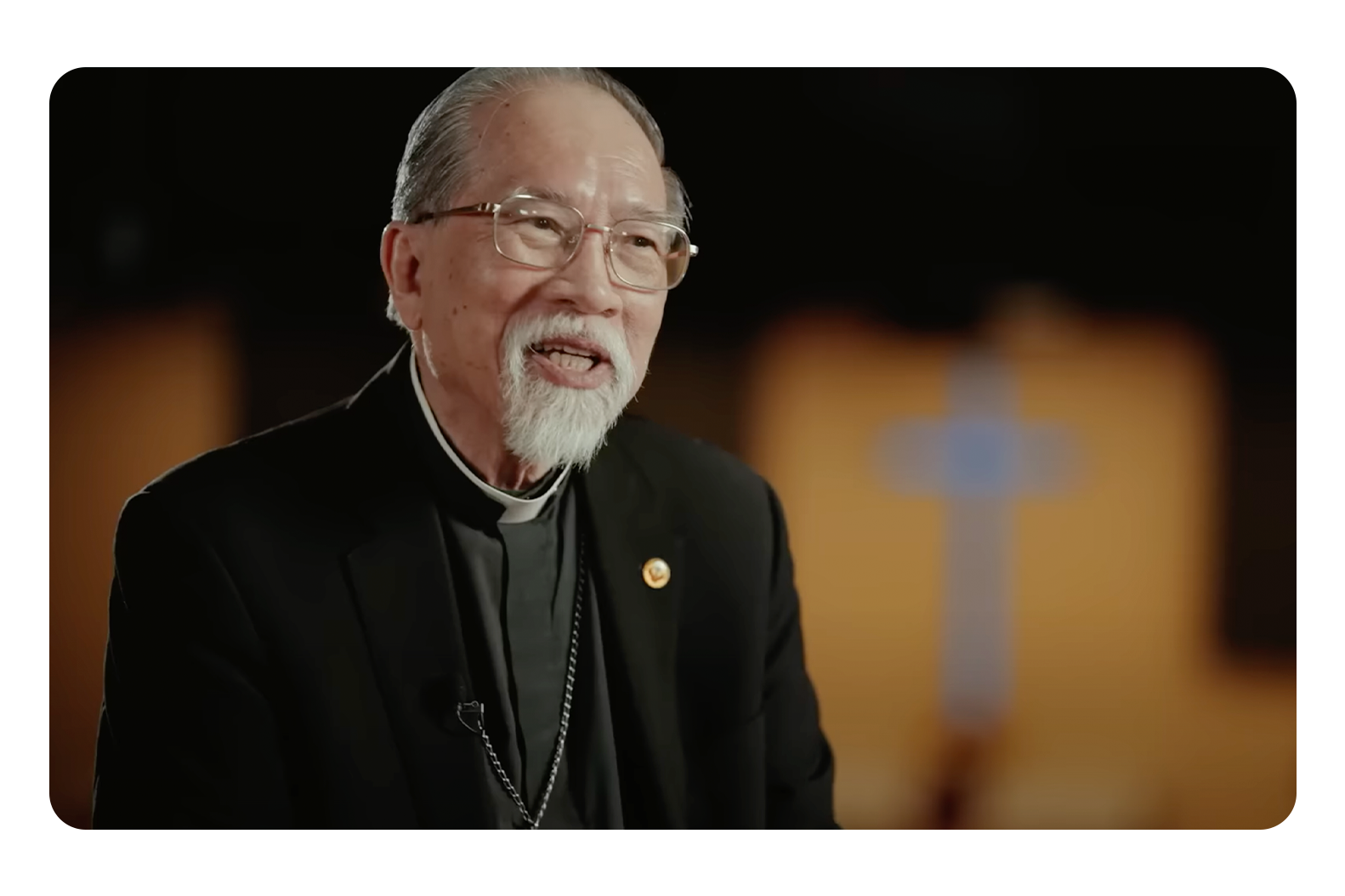
By the time Rev Dr Isaac Lim took over the leadership of the church in 1982, he was witnessing a spiritual renewal.
He shared: “I remember my office was on the second floor, and I could look down and see people coming to church on Sundays.
“And I still remember I asked myself: ‘Where are these people coming from?’ It’s not one or two — it’s whole droves of people walking up the pathway to the church.
“There was a hunger to hear the Word of God, a deep desire for God to speak to them, for God to touch them.
“And people were ready to be active in the life and work of the church.”
Sharing how the outpouring of the Holy Spirit impacted his church and his denomination, the former Pastor-in-Charge of Wesley Methodist Church observed that one of the biggest things that happened was “the transformation of lives”.
“(This) resulted in quite a number of Wesleyans becoming pastors. And today, they’re pastors of the Methodist Church,” he said.
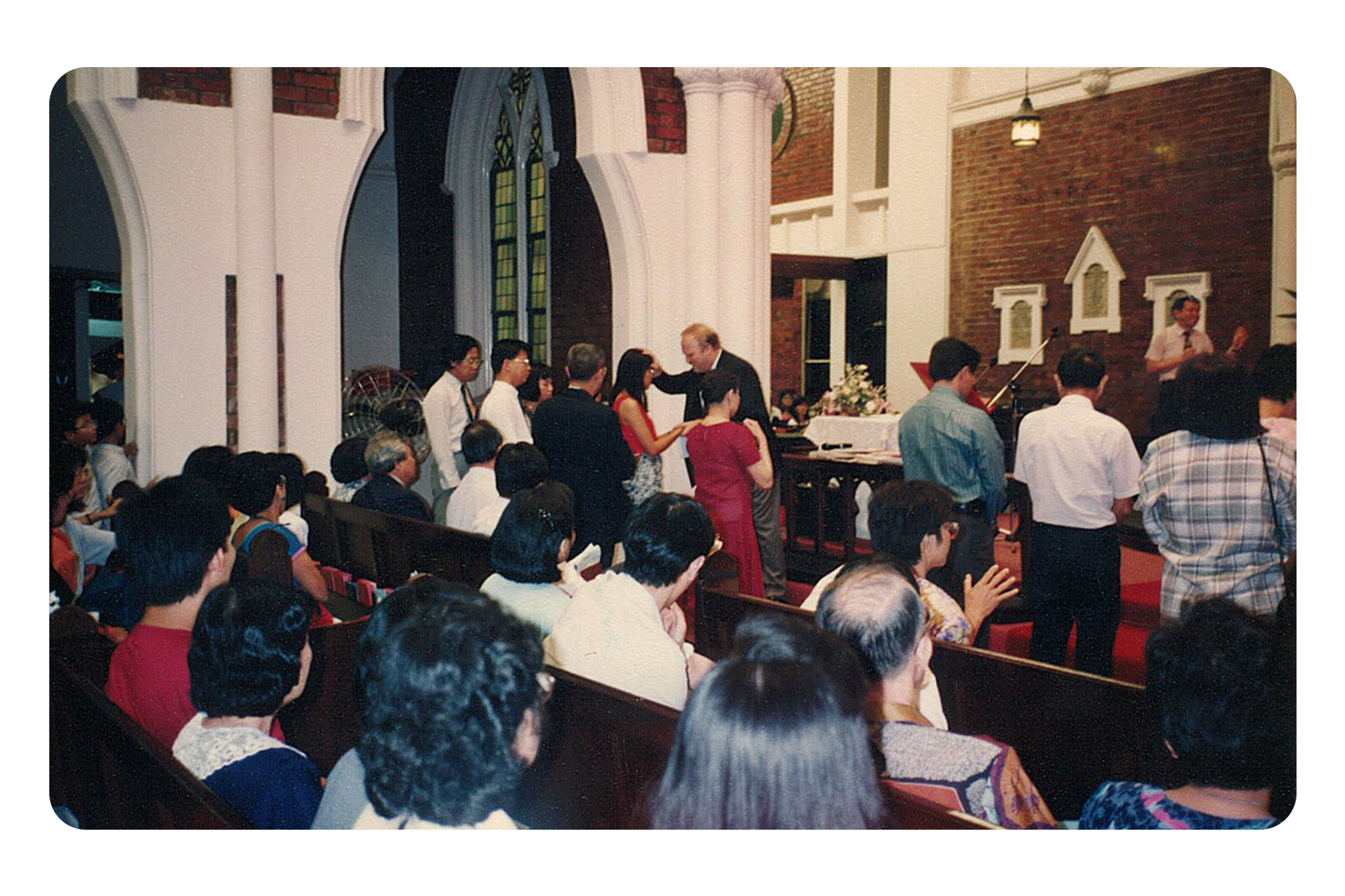
Echoing this point, Lee, founding elder of the Chapel of the Holy Spirit, said: “That revival, just stimulated — simply challenged — many people who decided to be involved in pastoral work or ministry.
“And that, in a way, helped the growth of the Church in Singapore.”
So divinely, God had used the revival to plug a leadership gap here.
“When we became independent, a large number of pastors and church leaders were foreigners from the West,” he commented.
As a new nation, how else was Singapore going to fill the void when these clergy returned to their own countries?
Reflecting on the last 50 years, Lee concluded: “I believe that God’s blessing has been upon Singapore.
“And it has something obviously to do with this whole revival that spanned the period immediately after independence over the years of our development, from third world to first world.
“If we go back to history, in the 1930s we had the John Sung revival. Fast forward 40 years, one generation later, in the ’70s was the Charismatic revival.
“And now we are 40 years after that ’70s revival. We believe that we are really at the cusp of another revival in Singapore.”
This story is part of a series of articles we are publishing based on the transcripts from unaired footage of the #Revival1972 documentary.
In coming weeks, we will explore what a revival could look like today, obstacles and pitfalls to seeing that happen, and hopes and dreams for the next generation.








